Canadian taxpayers can decrease their tax obligations by claiming business expenses when they file....
How Do Acoustic Panels Work?
Article by Andrew Holmes |

At its core, acoustics is the study of sound – how sound is created, how sound travels and how sound eventually dies.
Physically, sound can be thought of as little, invisible vibrating waves that travel all around us. And while these vibrating waves are everywhere in our world, it’s only when they come in contact with our eardrums that our brains are able to convert these vibrations into something that makes sense. (And to answer the age-old question, yes, even if no one is around to hear it, that tree still makes a sound when it falls).
Now despite being invisible, we’re able to measure these sound waves and learn about them based on some of their physical properties.
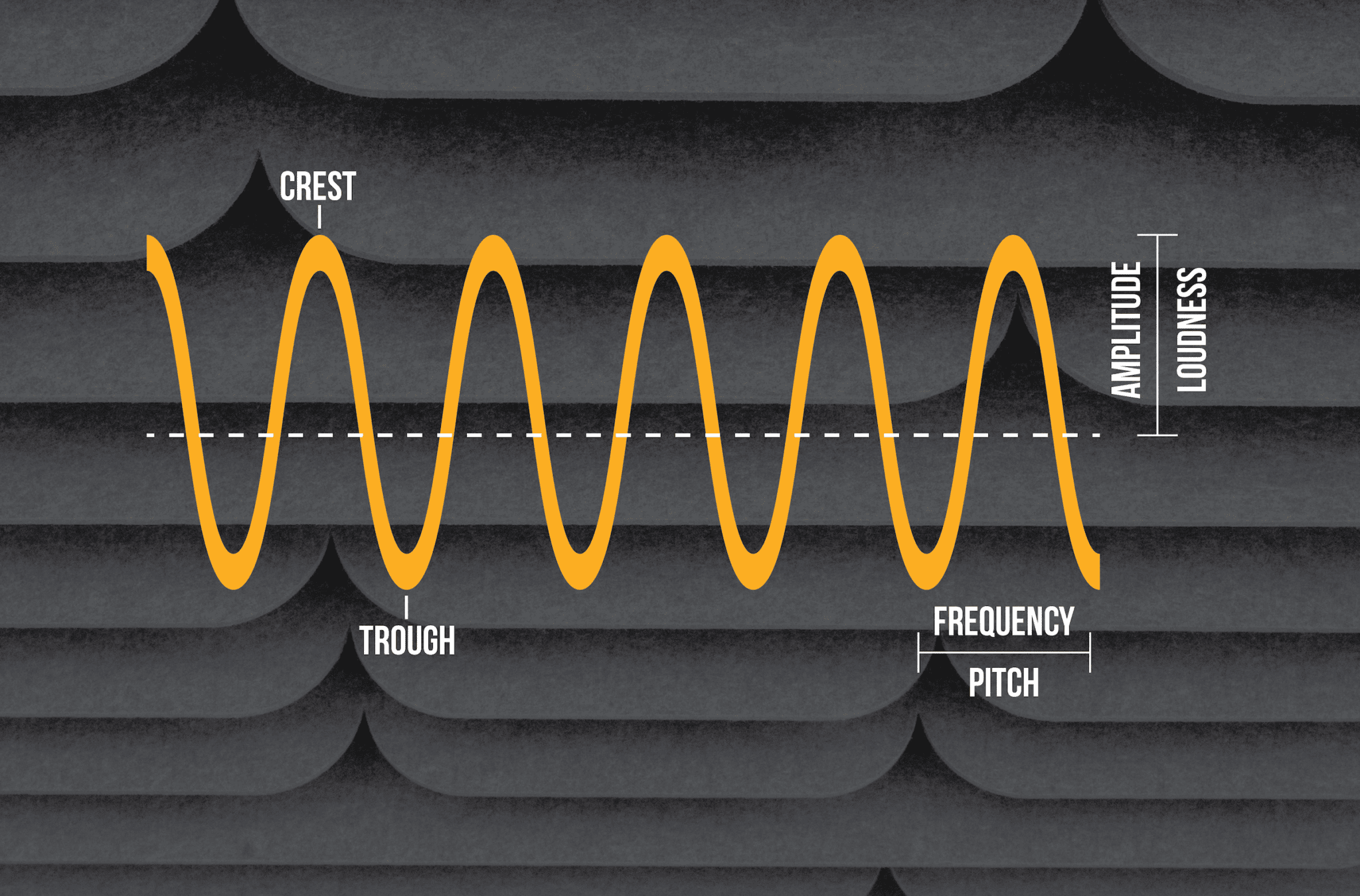
Loudness – The height of a wave’s crest determines its loudness. The higher the crest, the louder the sound. Loudness is measured in decibels.
Pitch – The proximity of a wave’s crest and troughs determines its frequency. The closer these crests or troughs are to one another, the higher-pitched the sound. Pitch is measured in hertz.
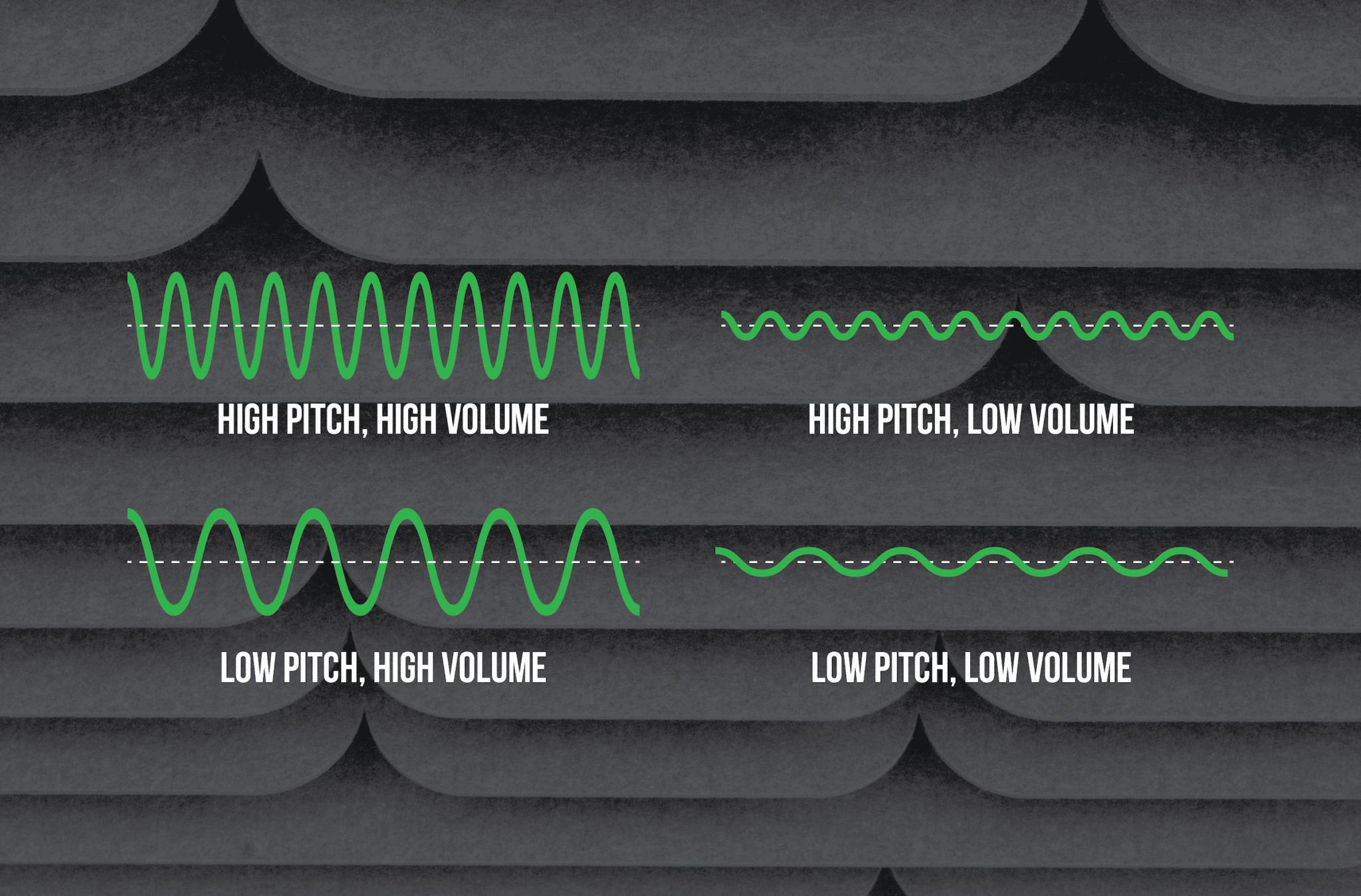
While a better understanding of acoustics may help your Tuesday night bar trivia score, it won’t make your office any quieter. Fortunately, modern technology has allowed us to take this field of science and layer real-world applications on top of it.
So let’s get practical.
When sound waves interact with a material one of three things will happen to the wave:
- Absorbed – Part of the sound wave will be swallowed by the material
- Reflected – Part of the sound wave will bounce off the material
- Transmitted – Part of the sound wave will travel through the material
Knowing these differences, we can begin to grade materials based on their acoustic properties
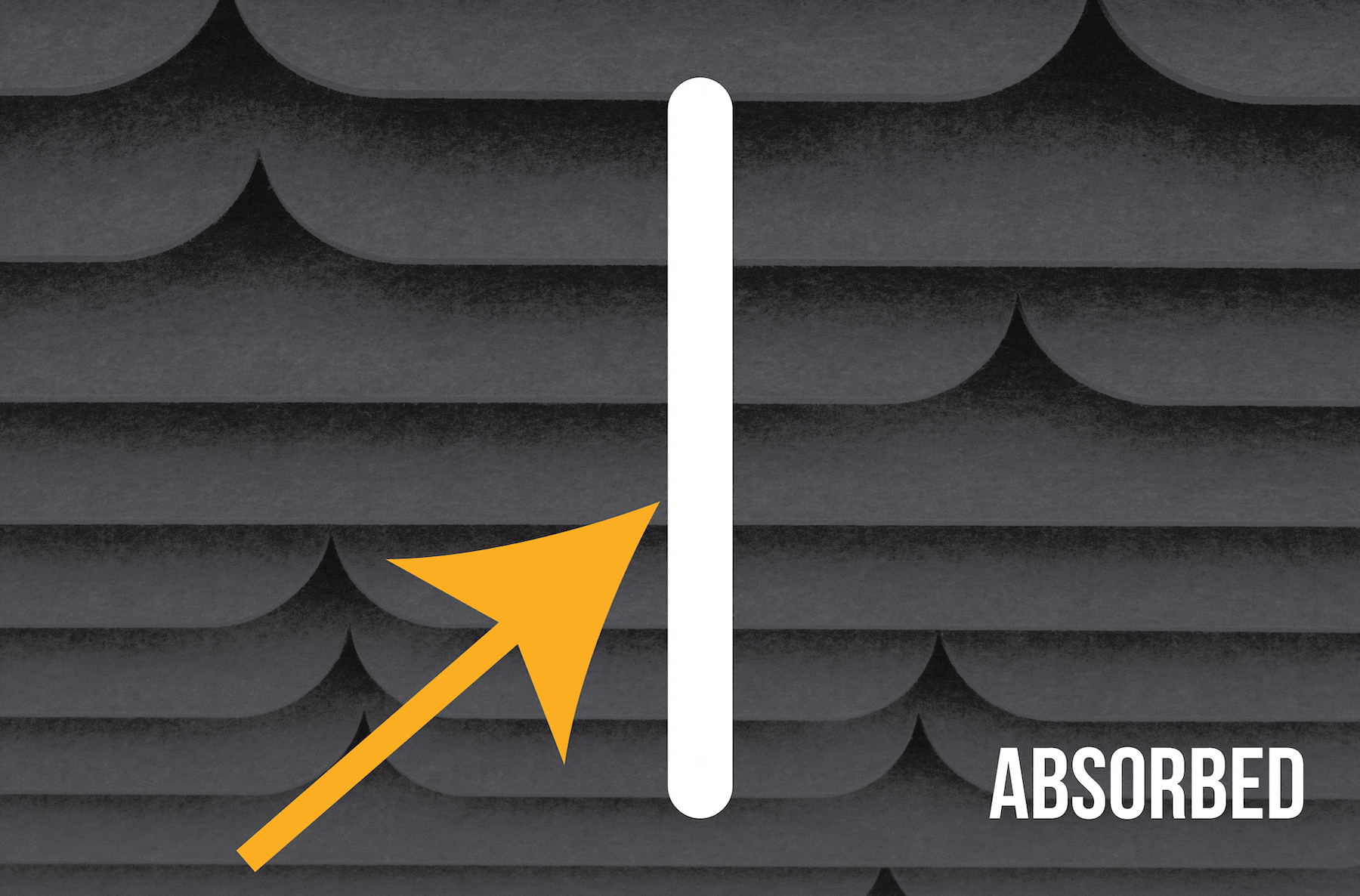
NRC Rating
A Noise Reduction Coefficient (NRC) is a rating of how much sound a material can absorb. Measured on a 0 to 1 scale, materials with a 0.0 grade will absorb no sound while materials with a 1.0 grade will absorb all of the sounds they come in contact with.
To determine a material’s NRC rating, tests are done at a range of pitches. The final NRC rating is an average of these different pitch ratings.
When working on improving the acoustics of a space, always consider the material’s NRC rating.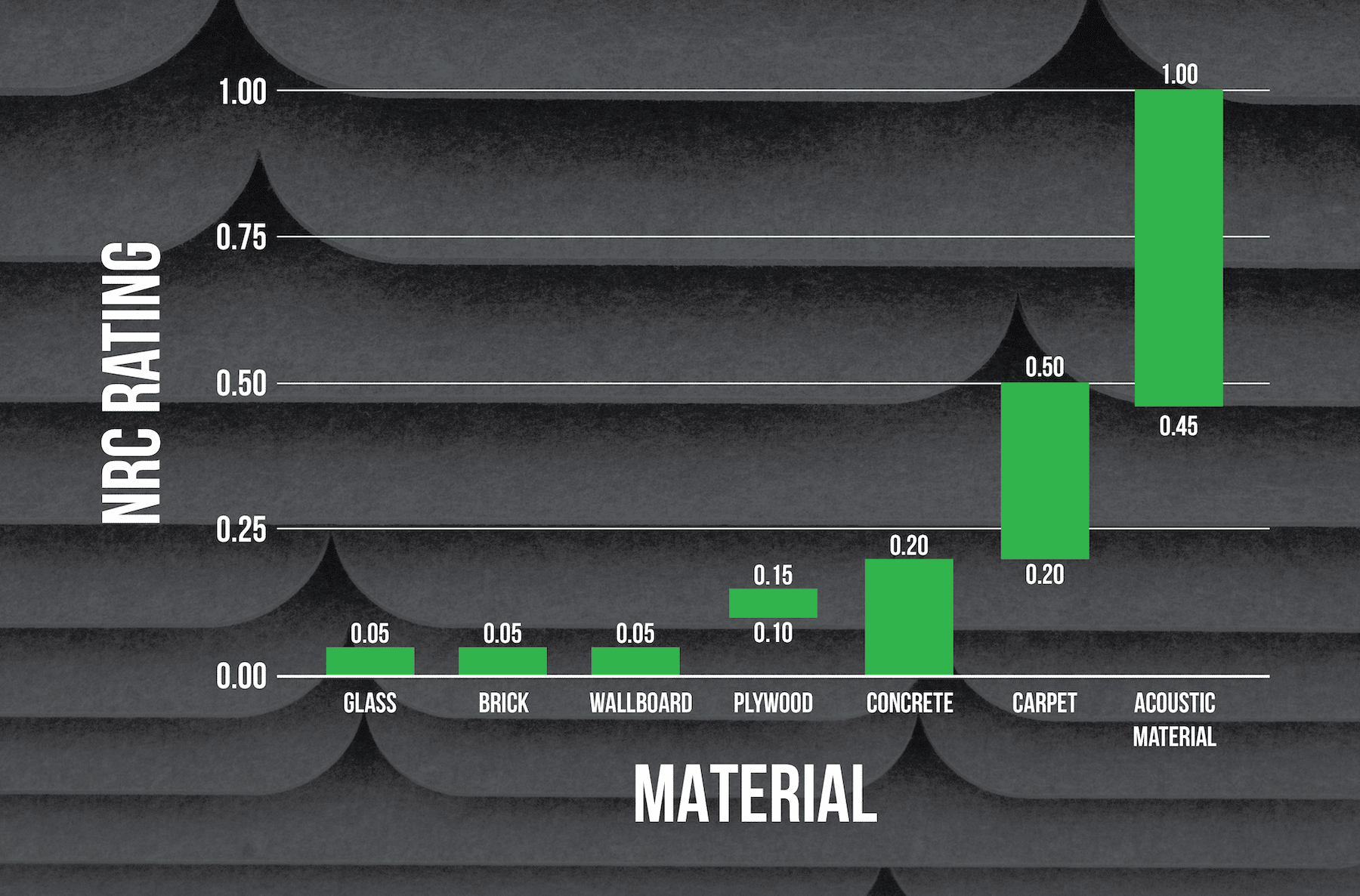
So, I can improve the acoustics of my space by just putting material with a high NRC rating everywhere?
Well yes, but it’d be expensive and probably look bad. A better plan is to strategically place acoustic material throughout the space. But to understand where acoustic material should be placed, we need to understand how sound travels around a room.
The sounds we hear are a combination of direct and reflected waves. Direct sound waves come unobstructed from the source to the receiver while reflected sound waves bounce off other objects before reaching the receiver.
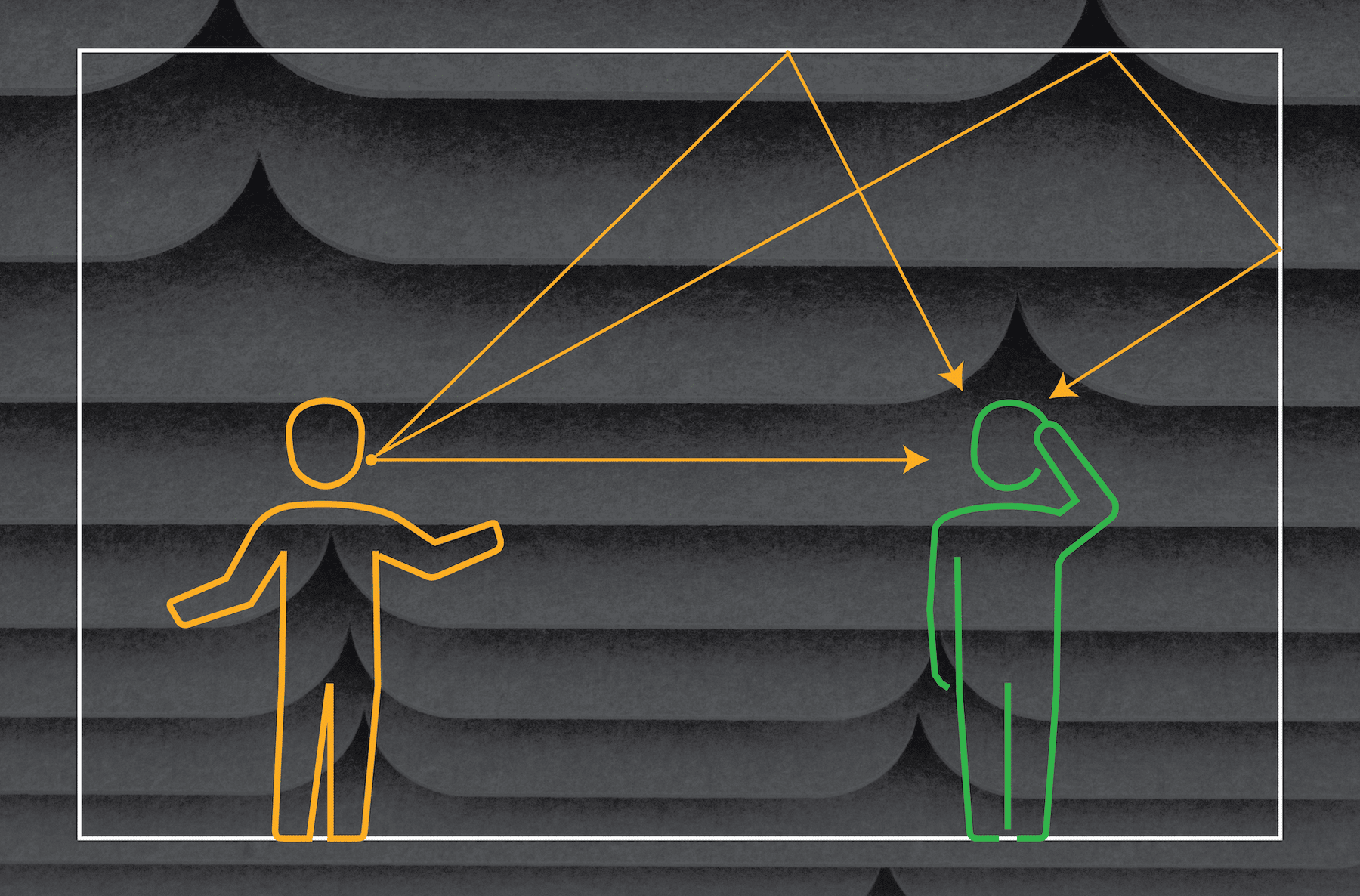
Reflected Sound Waves
Echoes are the best way to understand reflected sound waves. If you’ve ever been to an empty gym or warehouse, you know the phenomenon. You can shout anything (but the unwritten rule is that you have to shout “echo”), wait a few seconds, and then you’ll hear your voice reverberate back. Fun to experience in an empty warehouse, but miserable to experience in your office.
While not as dramatic in the modern office, most of today’s workspaces have an acoustic reverberation problem. Delayed, reflected sounds pester us while we’re trying to get into a focus zone or brainstorm ideas with a colleague.
Fortunately, we can use design to combat these issues.
The best way to reduce reflected sounds is through acoustic wall tiles and acoustic ceiling baffles. These products are designed with soft, porous materials with a high NRC rating. And in the case of ceiling baffles, the sound that is reflected back is reflected into another baffle that’ll further reduce the wave’s strength.
Adios, echoes.
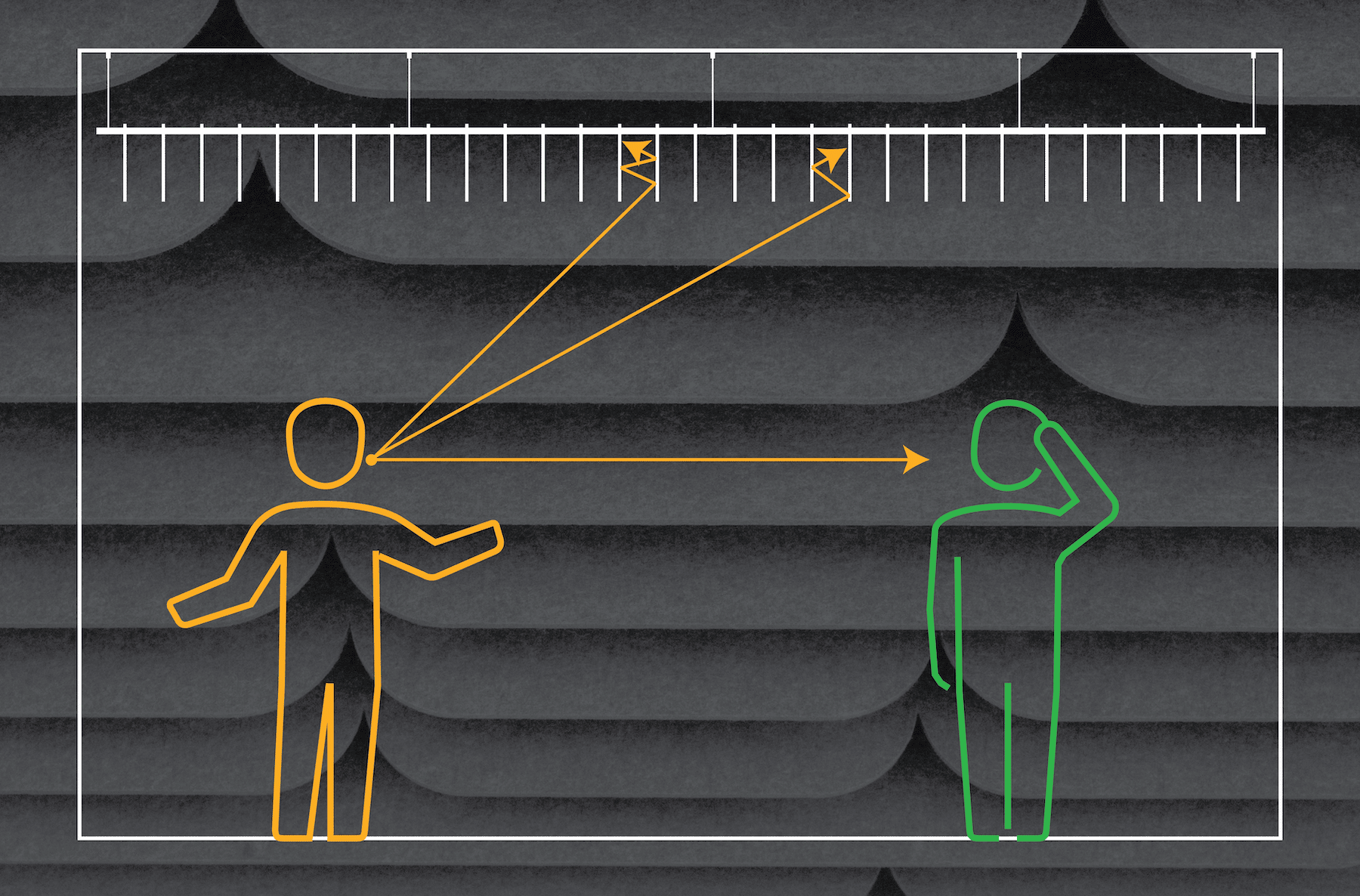
Direct Sound waves
Direct sound waves are simpler to understand. While reflected sound waves do contribute to a space’s loudness, direct sound waves are often the largest offender.
To reduce direct sounds, we’d always recommend starting with a form of division. From wall dividers to desk dividers, there are plenty of options and styles available to fit your environment. However, if loudness is an issue in your space, be sure your divider has acoustic panels 3′ to 7′ off the ground. As voices are often the source of excessive loudness, 3′ to 7′ off the ground is the sweet spot to reduce direct sound waves from people either sitting or standing.
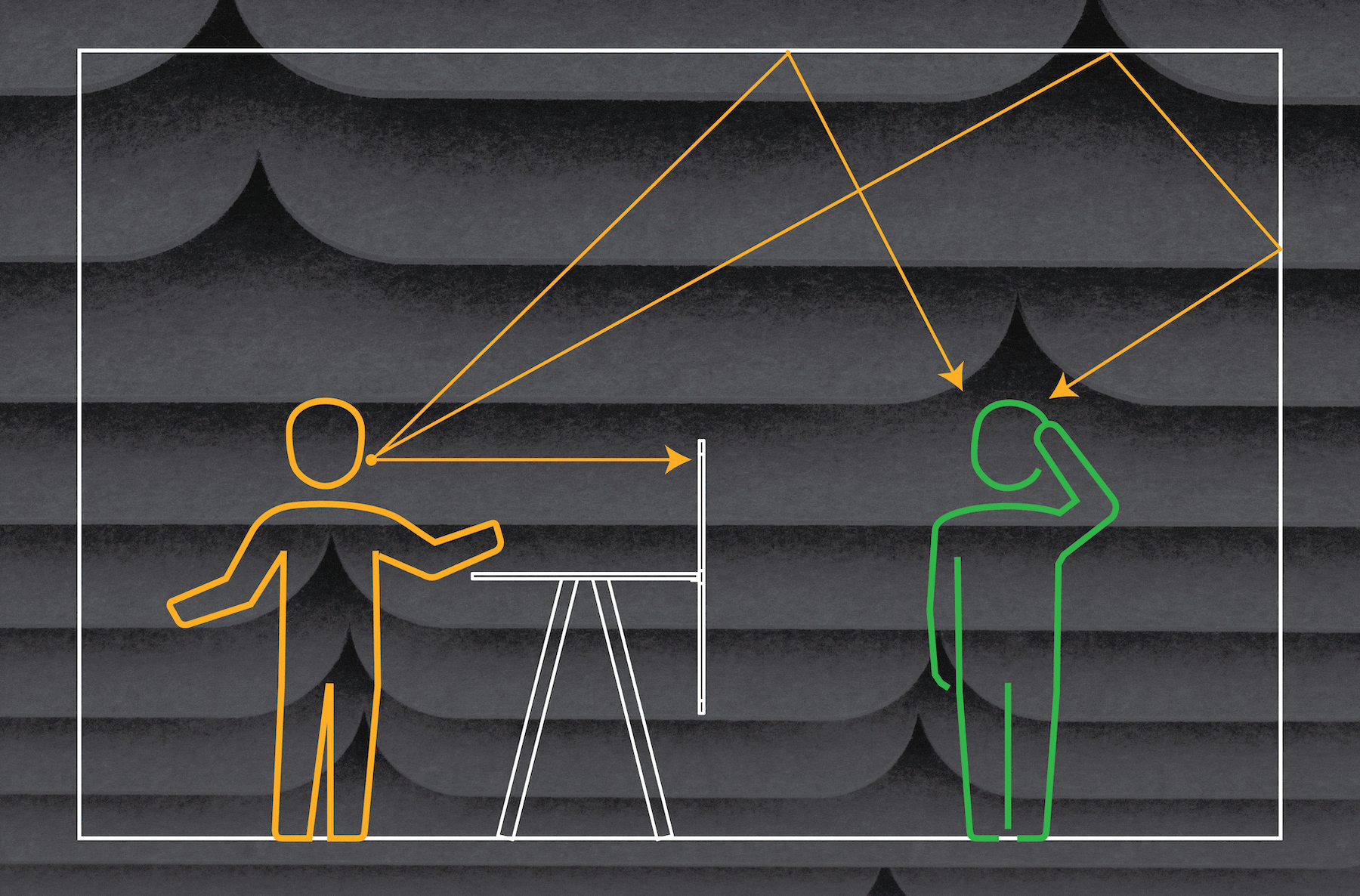
But for best results, we recommend designing against reflected sound waves and direct sound waves.
Typically this looks like a combination of acoustic dividers and acoustic ceiling baffles.
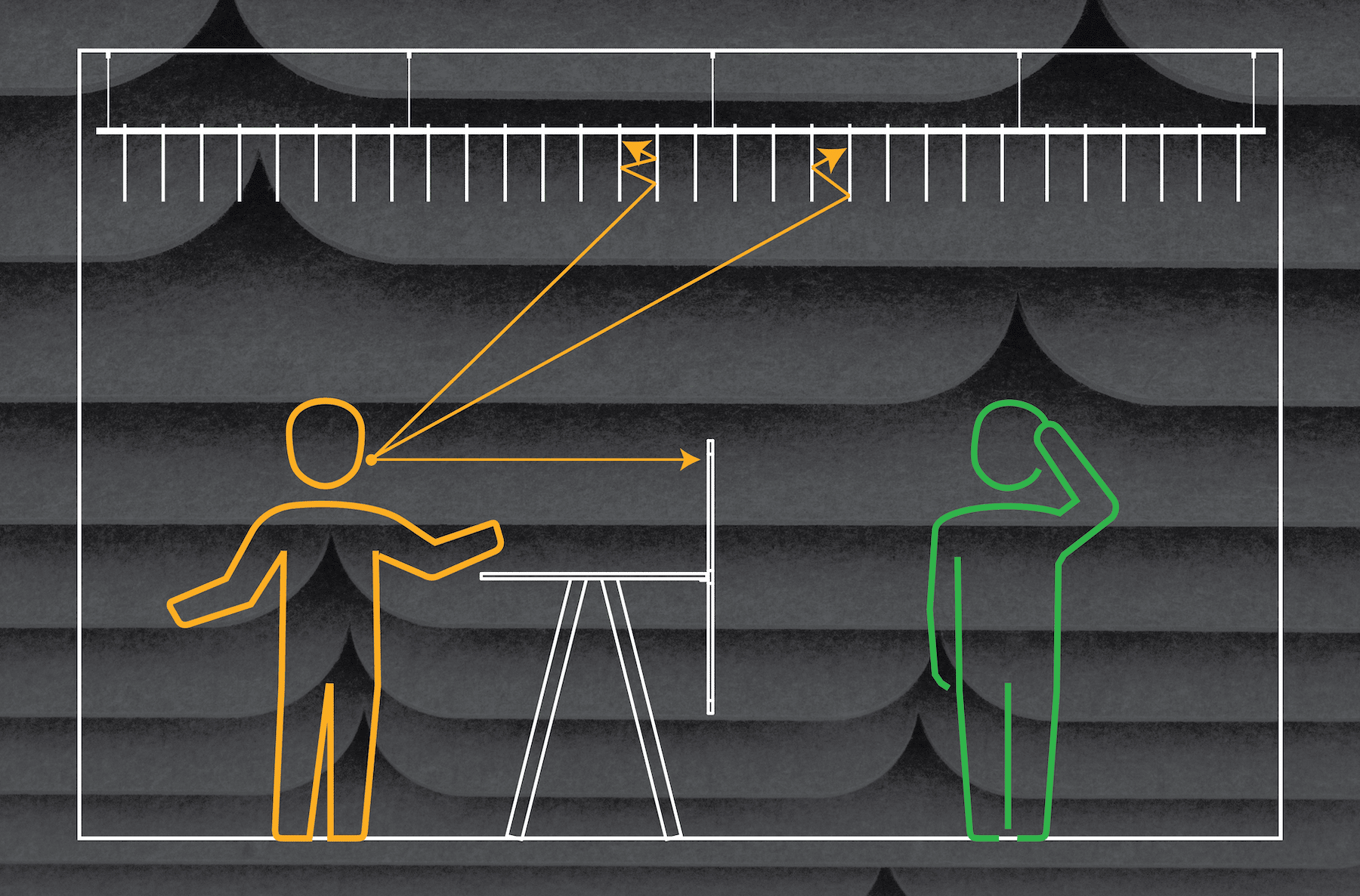
And when spaces are properly designed with acoustic solutions, the results speak for themselves.
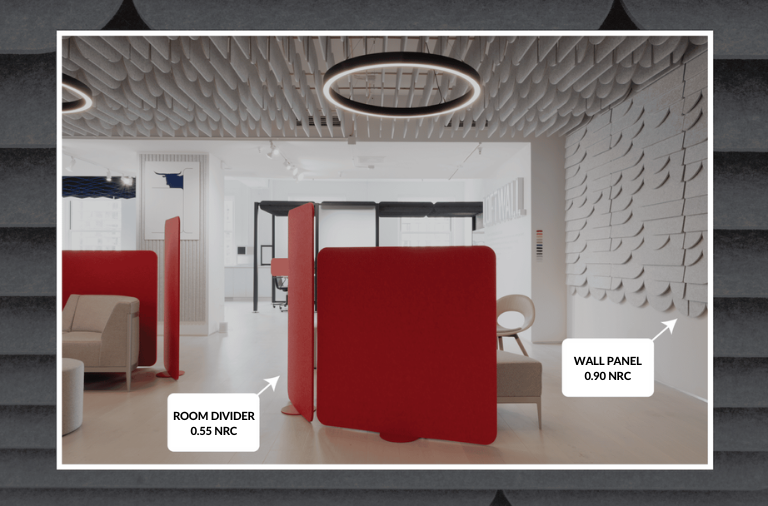
In conclusion, the bullet points to remember are:
- Materials with a high NRC rating can absorb sound waves
- Direct sound waves are best stopped with desk dividers or wall dividers
- Reflected sound waves are best stopped with ceiling baffles and wall tiles
Ready to turn down the volume in your space? Our team is standing by, ready to help.
Download this information in PDF format to easily share with others!
Source: https://loftwall.com/how-do-acoustic-panels-work/


.png?height=200&name=Blog%20Posts%20Pictures%20resizing%20(1).png)

